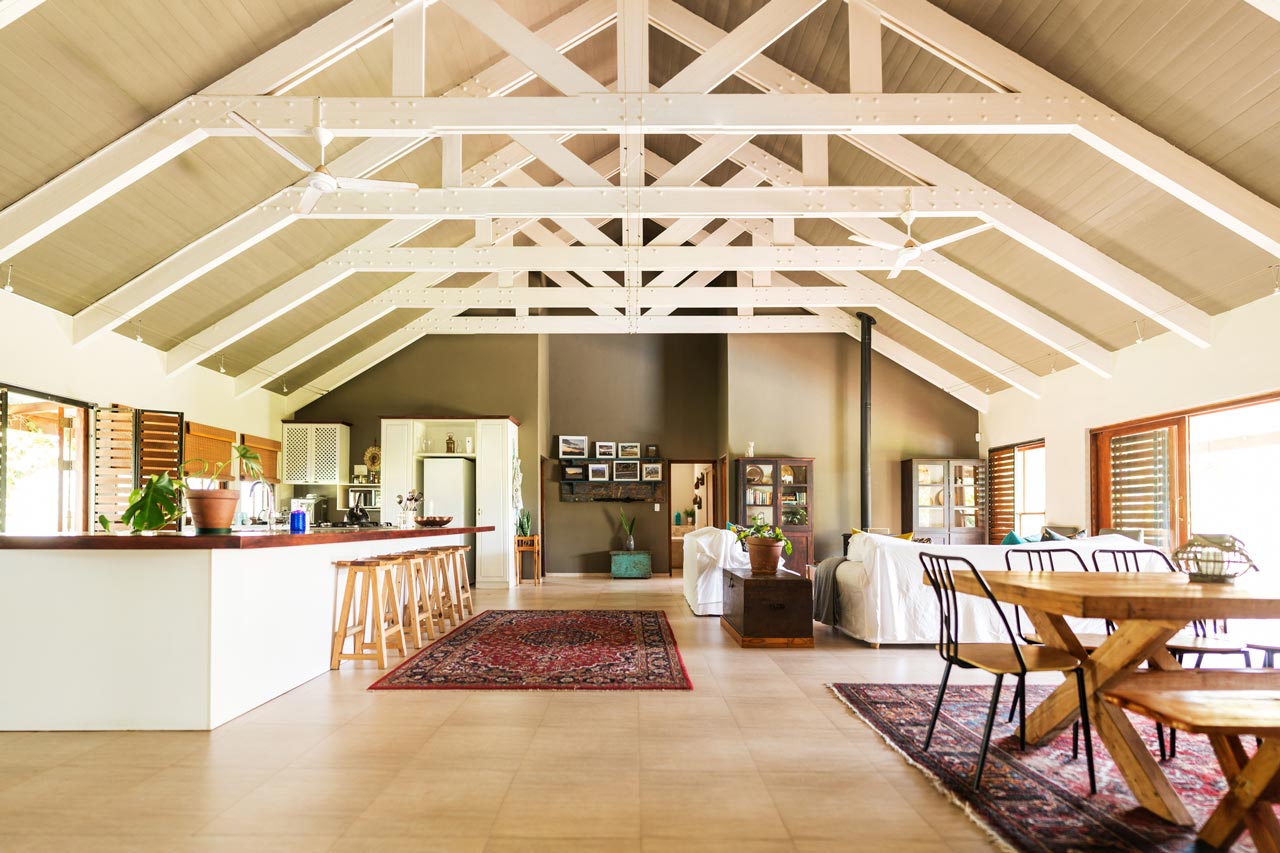Sustainable Residing In a Barndominium: EcoFriendly Features to Think About When Building
As the fad of barndominium living gains grip, the integration of lasting methods is coming to be progressively important for eco mindful builders. By selecting energy-efficient products, checking out renewable power choices, and applying innovative water preservation systems, one can substantially boost the eco-friendly footprint of these functional structures.
Energy-Efficient Structure Materials
When building a barndominium, selecting energy-efficient structure products is essential for advertising sustainability and minimizing total energy consumption. The choice of materials directly impacts the building's thermal performance, durability, and environmental impact. Lasting choices such as redeemed timber, bamboo, and recycled steel not only lessen resource depletion yet likewise lower waste in landfills.
Additionally, concrete, when sourced responsibly, can be an efficient energy-efficient product. It supplies outstanding thermal mass, assisting to regulate interior temperature levels and reduce reliance on heating and cooling down systems. High-performance home windows with low-E finishes and insulated structures can significantly boost energy effectiveness by lessening warm transfer.
An additional factor to consider is the setup of energy-efficient roof covering materials, such as steel, which reflects solar power, thus reducing air conditioning costs. Including these materials not just supports a greener way of life yet can likewise cause long-term monetary cost savings with lowered energy expenses.

Lasting Insulation Options

Cellulose insulation is originated from recycled paper products, providing an environmentally friendly alternative with superb thermal efficiency. Its capability to resist moisture and lower air leak makes it especially reliable in keeping constant indoor temperature levels (view now). Lamb's wool insulation is another all-natural choice, supplying remarkable breathability and wetness administration while being biodegradable
For those thinking about spray foam, choosing products with reduced international warming capacity and high sustainable content can further enhance sustainability. Barndominium builder. In addition, reflective insulation panels made from recycled products can be integrated to boost power efficiency by reducing warm loss
Eventually, buying lasting insulation not just minimizes power usage but also advertises a comfy living room, lining up with the principles of eco-friendly living. Mindful consideration of insulation products will certainly add to the long-term sustainability and performance of a barndominium.
Water Conservation Equipment
Implementing reliable water preservation systems is important for making the most of sustainability in a barndominium. Among the most impactful approaches is the setup of rain harvesting systems. By accumulating and storing rainwater from the roofing, house owners can considerably lower their reliance on metropolitan water supplies while giving a sustainable resource for watering and non-potable uses.
Furthermore, incorporating greywater recycling systems can further improve water preservation efforts - visit site. These systems allow for the reuse of wastewater from sinks, showers, and laundry, channeling it back right into the watering system or bathrooms. This technique not only saves water but likewise decreases the worry on septic systems
Low-flow components and appliances, such as faucets, showerheads, and commodes, are also important elements in water preservation. These fixtures can decrease total water use without sacrificing efficiency, making them a reliable option for eco-conscious building contractors.
Last but not least, landscape design with drought-resistant plants can decrease water needs for outside spaces. Native and adjusted plant varieties commonly call for less water and maintenance, contributing to a lasting living environment. By executing these water conservation systems, barndominium proprietors can produce a more environmentally friendly and resource-efficient home.
Renewable Energy Resources
Harnessing eco-friendly energy sources is a critical facet of sustainable living in a barndominium. These panels transform sunlight right into electrical power, dramatically minimizing dependence on fossil fuels and decreasing energy expenses.
One more practical alternative is wind energy. Setting up a tiny wind turbine can supply an additional source of renewable resource, particularly in locations with regular wind patterns. Wind turbines transform kinetic power from the wind into electricity, matching solar power by producing power throughout over cast days or in the evening.
Geothermal heating and cooling systems can additionally contribute to power performance. By utilizing the steady temperature levels underground, these systems can significantly decrease the power needed for cooling and heating, making them perfect for barndominiums in different environments.
Including these renewable energy sources not just fosters a sustainable way of life however additionally raises the overall value of the residential property. By investing in such innovations, house owners can attain power freedom, lower their carbon impact, and add to a more sustainable future.
Eco-Friendly Landscaping Ideas
Producing a green landscape boosts both the visual allure and sustainability of a barndominium. By including native plants, house owners can promote biodiversity while lessening water usage and maintenance. Native species are well-adapted to the see website local environment, requiring less irrigation and plant food.
Furthermore, take into consideration carrying out permaculture concepts, which focus on developing landscapes that work harmoniously with nature. This can include growing edible yards, fruit trees, and pollinator-friendly blossoms to produce a self-sustaining ecosystem. Rainfall yards, developed to capture and absorb stormwater, are another reliable method to handle runoff and boost dirt health.
Making use of organic composts and garden compost not just enhances the soil but additionally minimizes the need for chemical plant foods. Including absorptive paving products for sidewalks and driveways can aid stop water drainage, promoting groundwater recharge.
Conclusion

 Joshua Jackson Then & Now!
Joshua Jackson Then & Now! Macaulay Culkin Then & Now!
Macaulay Culkin Then & Now! Traci Lords Then & Now!
Traci Lords Then & Now! Jane Carrey Then & Now!
Jane Carrey Then & Now! Bill Cosby Then & Now!
Bill Cosby Then & Now!